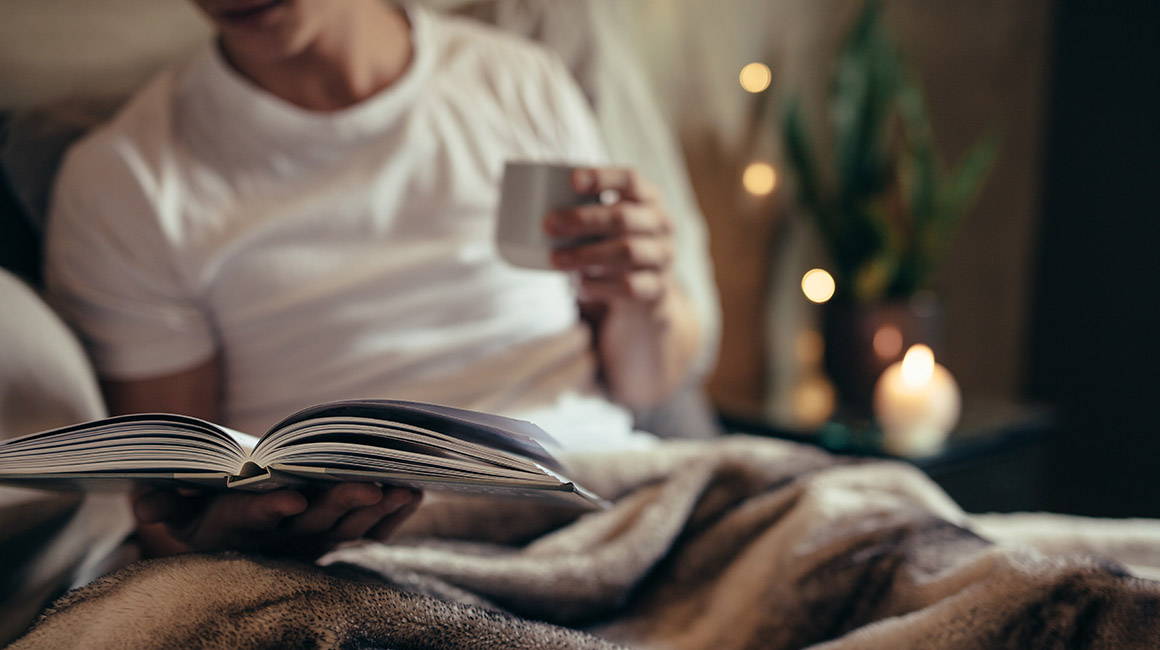
Everybody has a bedtime routine. For some, getting into a relaxed state of mind requires a good book, a light-hearted sitcom, or a meditation exercise with breath work. For those who have trouble clearing their thoughts in order to fall asleep, the wind down may look a little different. Extensive research on varying sleep patterns has led us to the development of tools that help our bodies achieve a successful night sleep. Weighted blankets have become one of these tools, and in many ways have been found to help people with anxiety, autism, and insomnia get the restful nights sleep they’ve been hoping for.
Pressure Therapy
At first glance, these look like regular blankets. Usually appearing soft in texture, and plush to the touch. These blankets however, are layered with thick fabrics and filled with tiny pellets made of glass or plastic. Weighted blankets can weigh anywhere from 3 pounds - better for small children - to more than 20 pounds for adults.
A long-standing theory that supported the birth of the weighted blanket is that pressure placed on the body activates the parasympathetic nervous system, which lowers your heart rate when you're stressed. The parasympathetic nervous system is responsible for the body’s rest and digestion response when the body is relaxed, and in turn, is vital to having a healthy and well-functioning respiratory and cardiac relationship. Essentially, the parasympathetic nervous system works hard to undo the work of the sympathetic system after a stressful situation— the system in our bodies responsible for our fight or flight response. Having your heart rate and stress levels under control can play a major role in getting your body to sleep. This pressure therapy is the same concept found to make a baby swaddle effective— it’s a cocoon of warmth and pressure, as if to remind us of a giant hug. Who wouldn’t be relaxed after a nice warm hug, right?
Using weight as a calming strategy has a place in other current medical practices beyond pointing out the importance of a baby swaddle. Dr. Cristina Cusin, an assistant professor of psychiatry at Harvard Medical School points out that weighted blankets have been around for a long time, especially for kids with autism or behavioral disturbances. "It is one of the sensory tools commonly used in psychiatric units. Patients who are in distress may choose different types of sensory activities — holding a cold object, smelling particular aromas, manipulating dough, building objects, doing arts and crafts — to try to calm down." Occupational therapists (OTs) will sometimes use weighted blankets as a form of therapy for children with sensory issues like ADHD or anxiety as well.
Anxiety and Sleep Disorders
Most people have experienced trouble falling asleep at some point in their lives. In fact, some 20 million Americans have trouble falling asleep occasionally — and more than 40 million people in the US have long-term, chronic sleep disorders. Among these sleep disorders, insomnia is the most popular. According to the American Academy of Sleep Medicine’s ICSD-3 manual, insomnia is defined as “persistent difficulty with sleep initiation, duration, consolidation or quality.”
Stress and anxiety have been found to go hand in hand with sleep disorders, either being the reason they form in the first place, or making existing ones worse. A number of things can stress us out while we lay there waiting to fall asleep. Worrying about the next day's tasks can keep a person tossing and turning for hours before they finally drift off into slumber. Pressure from a weighted blanket prepares your body for rest by slowing down your heart rate and breathing, hugging your body, and supporting the important process of the parasympathetic nervous system. Implementing the usage of white noise or other sound devices, such as one of the Dreampad products, can help create a more relaxing environment if falling asleep in silence creates more space for these cumbersome thoughts. The Dreampad’s unique sounds delivery system also helps stimulate the parasympathetic nervous system.
Additional Benefits
As mentioned before, adults with sleep disorders aren’t the only ones who may benefit from a weighted blanket. Weighted blankets may work to serve some people with autism spectrum disorder and ADHD (attention deficit hyperactivity disorder) who become easily stimulated by things in their environment at bedtime. Pressure therapy is also said to release a chemical called serotonin, which helps your mind and body calm down. Serotonin can keep your mood steady and help with creating a sleepy mindset, preparing your body for rest.
Many people seek out the help of professionals when they have trouble falling asleep. Doctors often conduct sleep studies to rule out other possible diagnoses for why a person can’t fall asleep or stay asleep— like sleep apnea, a serious condition marked by abnormal patterns of breathing during sleep. Those who have been diagnosed with sleep apnea and other chronic breathing conditions should always consult a doctor before using a weighted blanket. Doctors might suggest trying different medications as part of a bedtime routine. These sleeping pill prescriptions have varying levels of effects on the body, and often take some getting used to. The best part about trying a weighted blanket, as that it’s prescription-free and can be conveniently ordered online. For those who have been struggling with feeling relaxed when they’re trying to fall asleep, this could be the perfect way to calm your body and mind in order to wake up feeling rested.
Trying Dreampad products is risk-free.
Return it within 30 days and we will refund your purchase and pay for return shipping.
